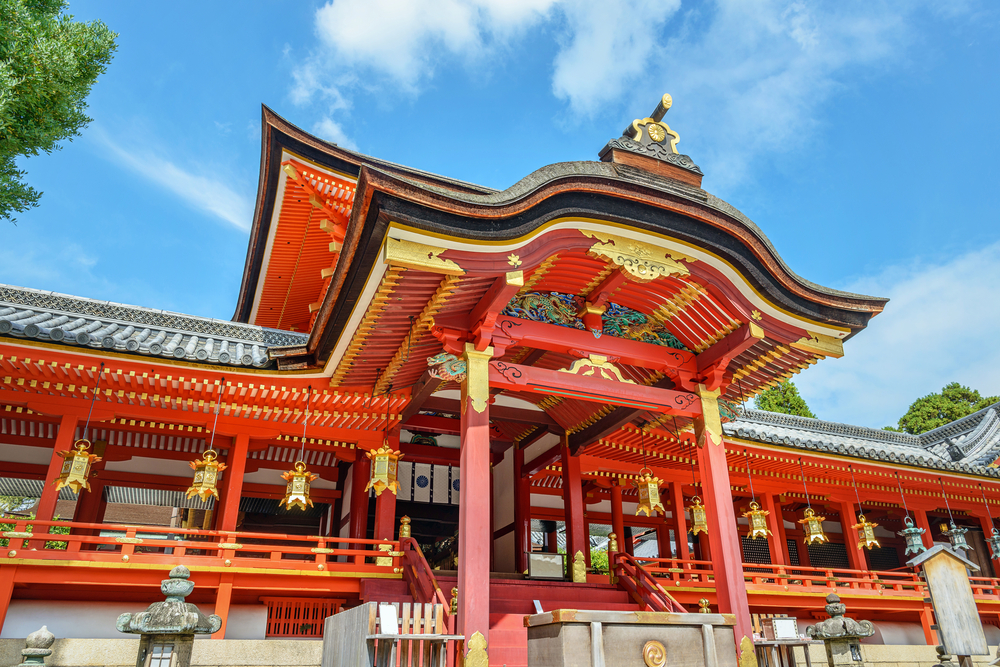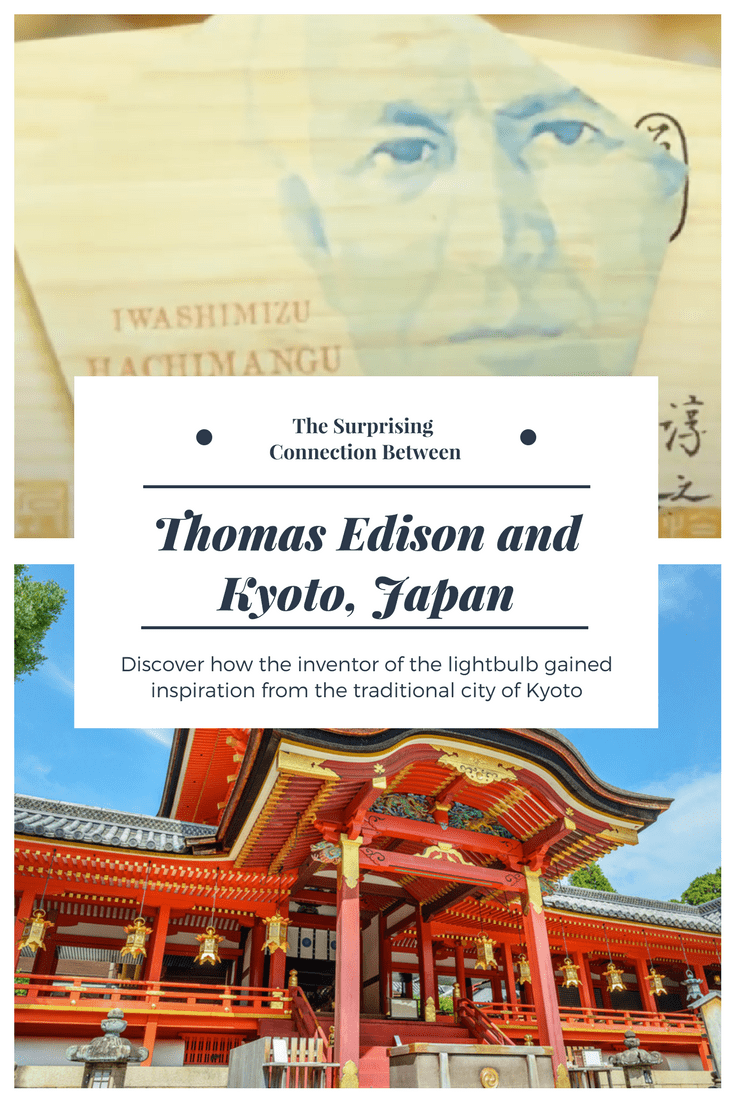In southern Kyoto, you’ll find Iwashimizu Hachimangu, a shrine that has been famous for its powers of warding against evil since the Kamakura Period (1185-1333). Nicknamed Hachiman-san by locals, it also has an unlikely connection to Thomas Edison’s lightbulb invention.
Iwashimizu Hachimangu — One of the Three Great Hachiman Shrines
Iwashimizu Hachimangu was founded during the Kamakura Period (1185-1333) and is one of Japan’s three great Hachiman shrines. The main shrine building is an elaborate work of art, completely covered in vermillion lacquer, delicate gold decorations, and intricate carvings. Because of its unique design, location, and architectural details, it has been designated a National Treasure of Japan.
A Spiritual Place Since the Kamakura Period
The shrine has been a significant place for spiritual and political purposes since 1150, with visits from the Imperial Family and Imperial Court, and Iwashimizu Hachimangu is one of only two shrines, along with Ise Jingu, to house imperial mausoleums. Nobunaga Oda gifted the shrine with golden gutters in 1580, and both Hidetoshi Toyotomi and Iemitsu Tokugawa have given offerings here. The attention received by emperors as well as warlords has contributed to Iwashimizu Hachimangu’s extravagant design and exceptional condition.
The shrine isn’t only appreciated by rich nobles, though. Locals have come here for centuries to protect themselves from evil, and are so well acquainted with the shrine that they call the enshrined god there “Yawata no Hachiman-san,” which is a kind of nickname.
Ward off Evil with Iwashimizu Hachimangu’s Arrows
Because of its long history and its slew of illustrious patrons, Iwashimizu Hachimangu has made a name for itself as a shrine that wards off evil. Many shrines can claim the same effect, but Iwashimizu’s gods are especially known for acting swiftly and strongly. Being one of the Imperial Court’s go-to spiritual centers helps, and it brings thousands of people hoping to avoid bad luck. Visitors who come for the purpose of warding off evil often buy the Hachiman Goshinya (God’s Arrow) to enhance the power of the gods.
Iwashimizu Hachimangu’s Surprising Connection with Thomas Edison
When Thomas Edison was searching for a filament to make his incandescent lightbulb last longer, he found that bamboo worked surprisingly well. He sent researchers all over the world to find the best bamboo, and one of them, a man named William H. Moore, came back with bamboo from Kyoto. Edison tried it out and managed to create a lightbulb that burned for 1,000 hours — previously, his best attempt using cotton lasted only 40 hours. The bamboo filament he used came from Otokoyama in Yawata, Kyoto, which is where Iwashimizu Hanchimangu sits.
There is a memorial commemorating this connection in the shrine grounds, and an annual festival called Edison Setai-sai on Edison’s birthday, February 11, and another on the date of his death, October 18, called Edison Hizen-sai.
More info at www.iwashimizu.or.jp










